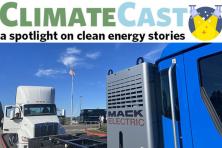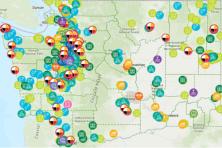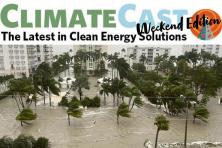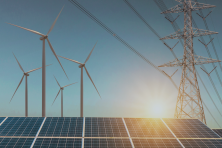Olympia, WA – The Department of Ecology on Wednesday released an updated draft of the Clean Air Rule, requiring reductions in carbon pollution from Washington’s largest polluters. Environmental and clean energy advocates expressed support for a number of key improvements to the language while calling for additional changes to ensure that the rule supports clean energy and helps Washington meet its long-term sustainability goals.
Vlad Gutman, Climate Solutions: “When we cut carbon pollution, we grow our economy, and this rule is a step to capture those benefits for our state. After the Legislature’s complete failure to respond to unprecedented forest fires and drought, Governor Inslee took action to combat climate change. While there is still room for improvement, it’s good to see the Dept. of Ecology taking steps in the right direction. Ultimately, we need the Legislature to take comprehensive action to address pollution in Washington.”
Noah Long, Natural Resources Defense Council: “Washington state law clearly supports strong action to address the threat of climate disruption. Washington has a long history of innovation and leadership, from the aerospace industry to hi-tech and now Washington is poised to take a leadership position in creating the new clean energy industries to address the climate threat. Washington has already started to see the potential impacts of a climate disaster, and we will be reading the rule closely to encourage the Department of Ecology to use its full authority to develop a strong and effective rule.”
Brian Grunkemeyer, Sierra Club: “We applaud the Governor for taking action to address the biggest existing carbon polluters since the legislature failed to take action,” said Brian Grunkemeyer, chair of the Washington Sierra Club Energy Committee. “Now we must be diligent to ensure we cap and reduce the output from new natural gas plants being planned by some utilities. The environmental impacts of natural gas fracking are severe and methane leakage makes natural gas almost as bad as coal for greenhouse gas emissions.”
Adrienne Alvord, Union of Concerned Scientists: “Governor Inslee’s administration has gone a long way in crafting a draft Clean Air Rule that will start to transition Washington to a low carbon economy. While there is more work to do to ensure the rule is effective, we believe the administration has worked very hard to create a rule that results in reductions of heat-trapping pollution. We look forward to continuing to work with the administration on policy that benefits Washington’s economy and public health while helping the fight against climate change.”
Sasha Pollack, Washington Environmental Council: “This updated Clean Air Rule is an important step forward for Washington on climate action, though limited by current law. Our state must continue to work toward a comprehensive climate policy that prices and reduces emissions, allowing us to reinvest in accelerating the transition to a clean energy economy and in the communities most impacted by climate change and the economic transition.”
The draft follows the withdrawal of a previous version of the rule in order to make improvements in response to feedback from a wide range of stakeholders. The new draft includes a number of meaningful improvements to ensure the integrity of statewide emissions reductions. Positive changes include:
- Adding an overall emissions limit for all covered facilities,
- Progress toward eliminating loopholes and double-counting of offsets that give twice the credit for half the benefit,
- Changes to facilitate business expansion and prevent businesses profiting unfairly off the rule, and
- Improvements to the energy intensive and trade exposed businesses program to allow them to better compete globally while covering all major polluters.
The groups will continue to advocate for further changes, including:
- Changing biofuel provisions to reflect their lower carbon emissions than petroleum fuels, which reflects current science and better aligns with policies elsewhere in the U.S. and internationally.
- Further refinement of the use of offsets to guarantee that on-paper emissions cuts actually reflect real-world ones.
- Ensuring that voluntary participants do not lead to reduced effectiveness for the rule overall.
- Protecting our air and water quality from backsliding, especially in existing hotspots, as a result of the rule.
###




